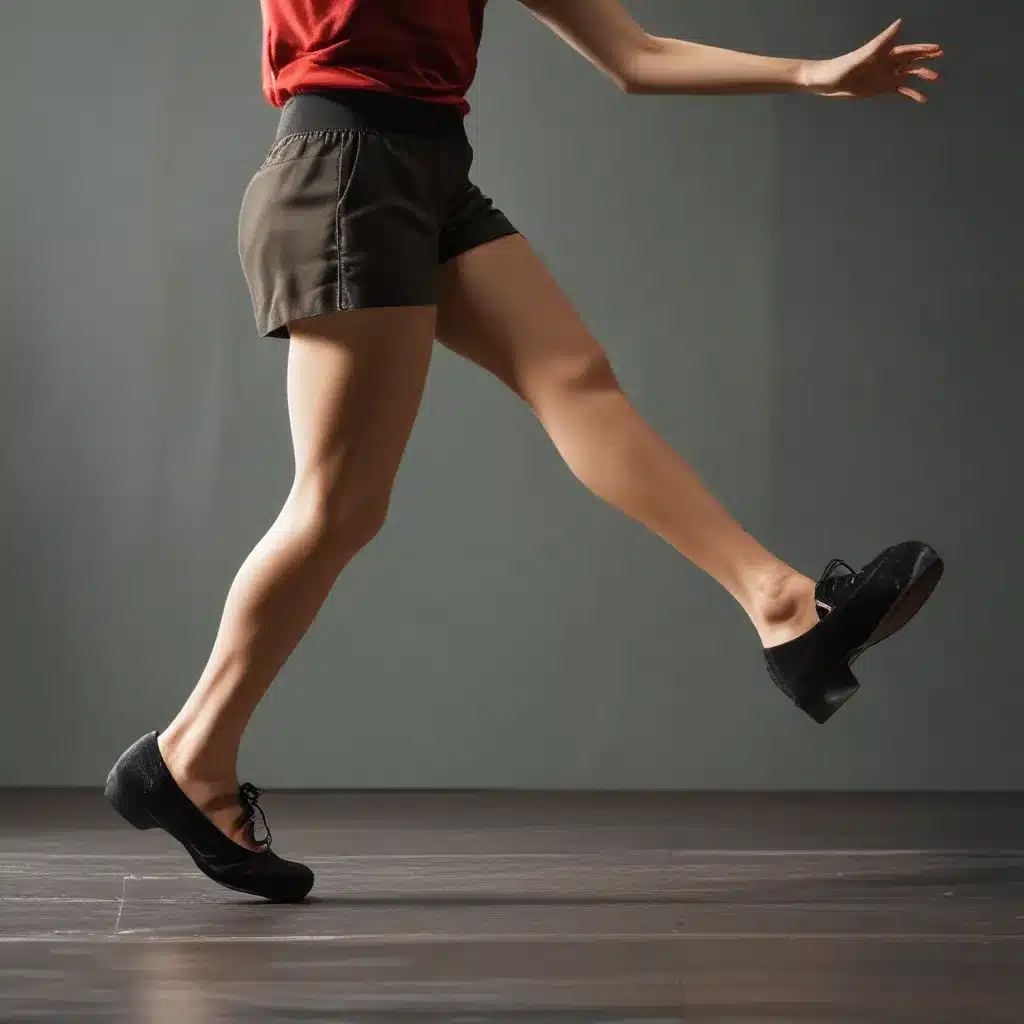
Discovering the Rhythmic Heartbeat of Musical Theater
As I step into the Musical Theater Center, the air hums with the infectious energy of dancers perfecting their craft. I’m here to dive deep into the rhythmic complexities of tap dance, a quintessential element that has long captivated audiences and performers alike in the world of musical theater.
Tap dancing, with its staccato beats and intricate footwork, is the rhythmic backbone that propels many of the most iconic musical theater productions forward. From the thunderous sounds of 42nd Street to the mesmerizing tap solos in Anything Goes, this dynamic art form has the power to elevate a performance, infusing it with a palpable sense of vitality and musicality.
Mastering the Fundamentals of Tap
As I venture into the tap dance studio, I’m greeted by the enthusiastic voice of Sara Sines, one of the center’s tap dance instructors. “In our tap classes,” she explains, “we explore various styles of tap, including the distinct rhythmic patterns and weight shifts that are so essential to musical theater tap.” Her students, ranging from ages 6 to 9, are already tapping away, their feet striking the floor with precision and fervor.
I observe as Sara leads them through a warm-up focused on technique and weight shifts. “This gives students the ability to refine their listening skills,” she says, “as well as build and strengthen the quality and style of their tap sounds.” The young dancers move with a contagious energy, their eyes fixed on the floor, their bodies swaying in sync with the driving beat of the music.
Ashley Daigle, the center’s director of dance, tells me that they also offer a Pre-K class that combines the grace of ballet with the rhythm of tap. “As with all of our Pre-K classes,” she explains, “we provide a nurturing, child-centered environment in which to introduce young students to the fundamentals of ballet and tap dance.”
It’s clear that the Musical Theater Center places a strong emphasis on laying a solid foundation in the basics of tap, recognizing that these core skills are the building blocks for more advanced rhythmic exploration.
Unlocking the Complexity of Tap Choreography
As I move to the older age groups, the tap classes become increasingly intricate. Patricia Handojo, the center’s ballet instructor, explains that her advanced tap students delve into more challenging movements and combinations.
“In our tap classes, we really focus on musicality,” she says. “The students learn to move with greater sophistication and skill, expressing the rhythmic complexities of the music through their footwork.” I watch as the teenagers execute complex sequences, their bodies moving with a fluid, almost effortless grace, their feet striking the floor in a symphony of percussive sounds.
One particular class that caught my attention is the Performance Group, an invitation-only class designed for the center’s most advanced dancers. “In this class,” Ashley Daigle explains, “students work with instructors to develop their choreographic and performative skills, with a strong focus on increasing the dynamic range and complexity of their movement vocabulary.”
I’m amazed by the level of sophistication on display as the dancers navigate intricate tap combinations, seamlessly transitioning between classical ballet, contemporary, and theatrical styles. The rhythmic complexities they navigate are truly awe-inspiring, a testament to the transformative power of tap dance in the world of musical theater.
Tapping into Diverse Styles and Influences
The Musical Theater Center’s tap dance curriculum doesn’t stop at the traditional forms. They also offer classes in urban dance, exposing students to the rhythmic vitality of styles like hip-hop and breaking.
“Your kid loves to dance around to pop music, right?” says Derrick Ladson, the center’s urban dance instructor. “Well, the kids are alright in this fun and energetic class devoted to urban dance forms.” I can’t help but tap my foot as I watch his students move with infectious energy, their bodies undulating to the beat of the music.
In the older urban dance classes, the focus shifts to “increasingly complex dance combinations as they further explore the language of urban dance,” Derrick tells me. “Musicality, rhythm, and performance skills are emphasized.” It’s a captivating blend of rhythmic precision and raw, expressive movement.
By incorporating diverse dance styles and influences, the Musical Theater Center is expanding the boundaries of tap dance, infusing it with a dynamic and multifaceted approach that reflects the ever-evolving nature of the art form.
The Rhythmic Heartbeat of Musical Theater
As I prepare to leave the Musical Theater Center, I can’t help but feel a renewed appreciation for the rhythmic complexities of tap dance. This art form, with its roots in African and African-American traditions, has become a integral part of the musical theater experience, elevating performances and captivating audiences with its infectious energy and virtuosic displays of footwork.
The instructors here have clearly dedicated themselves to nurturing the next generation of tap dance enthusiasts, instilling in their students a deep understanding and appreciation for the rhythmic intricacies that lie at the heart of this dynamic art form. From the foundational lessons of the young dancers to the breathtaking performances of the advanced students, the Musical Theater Center is a testament to the power of tap dance to transport us, to move us, and to ultimately become the rhythmic heartbeat that drives the magic of musical theater.

